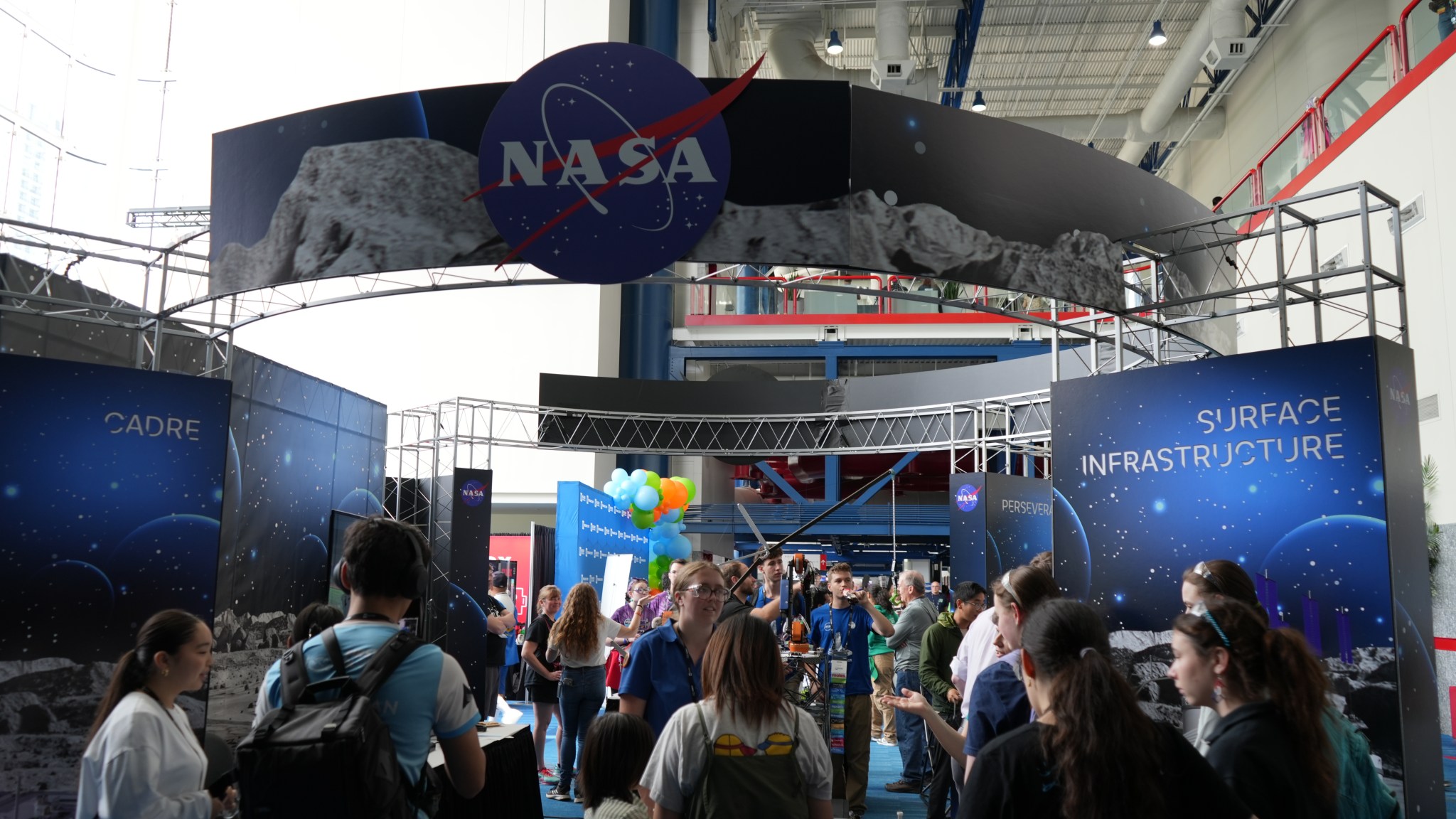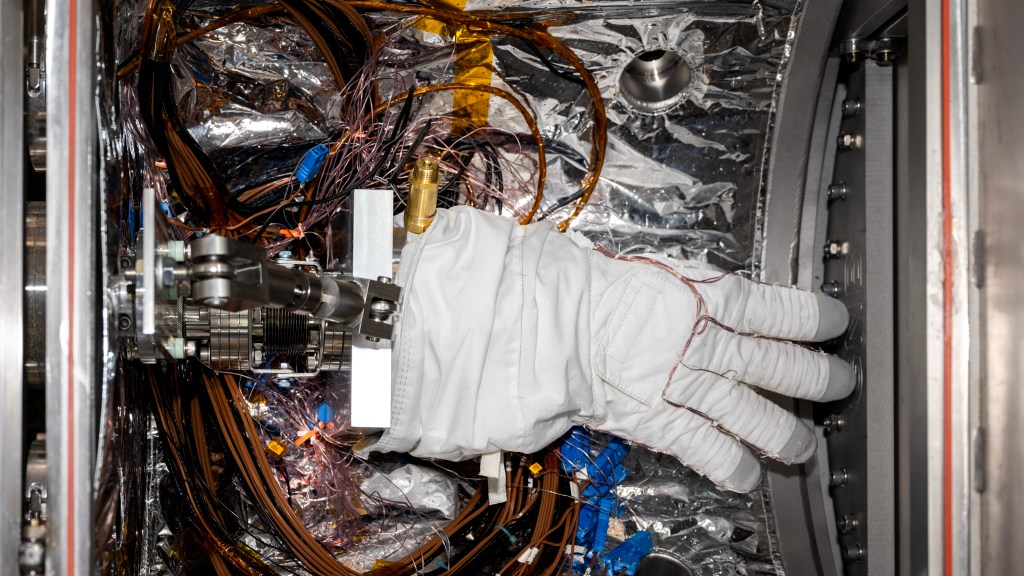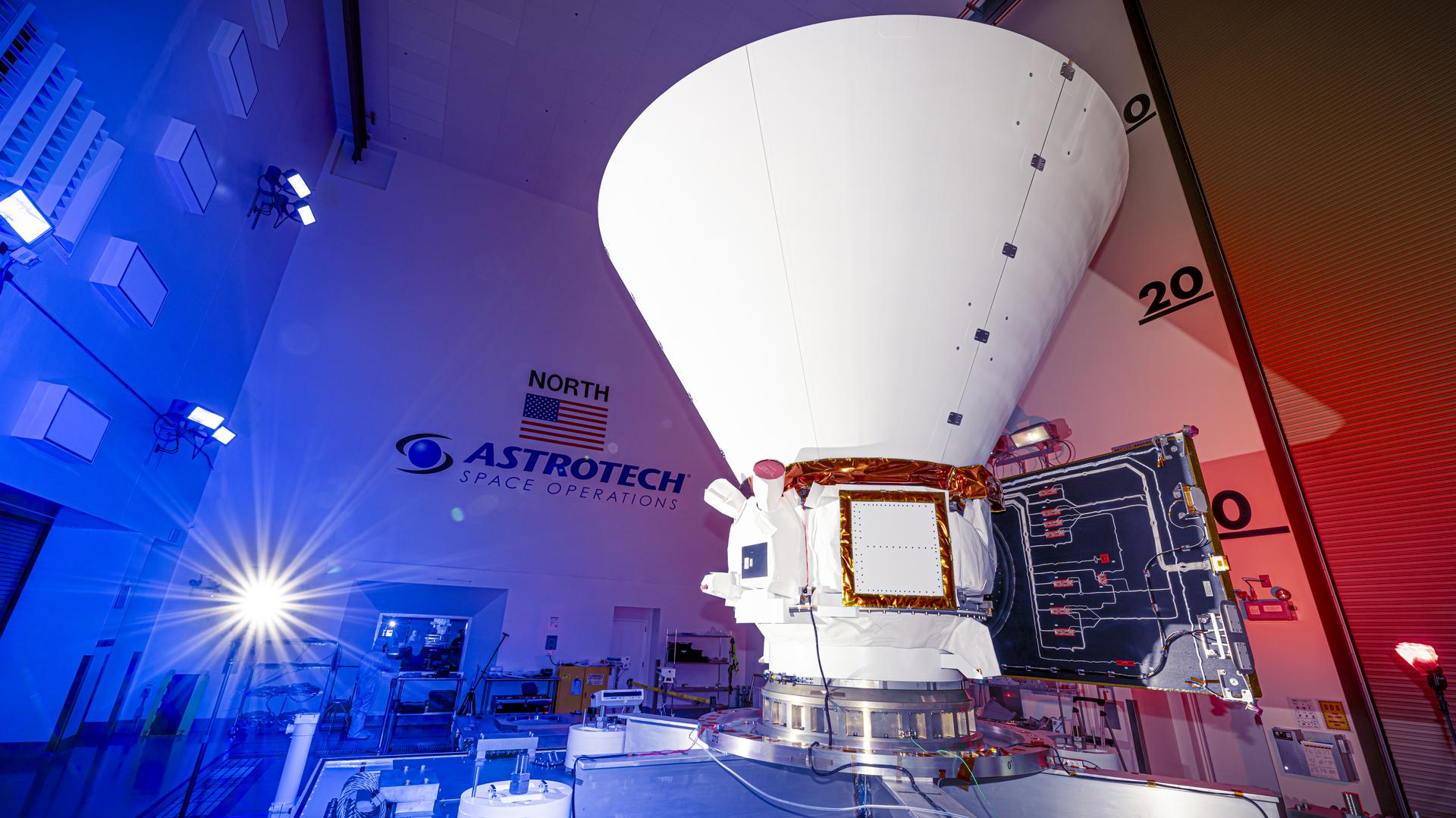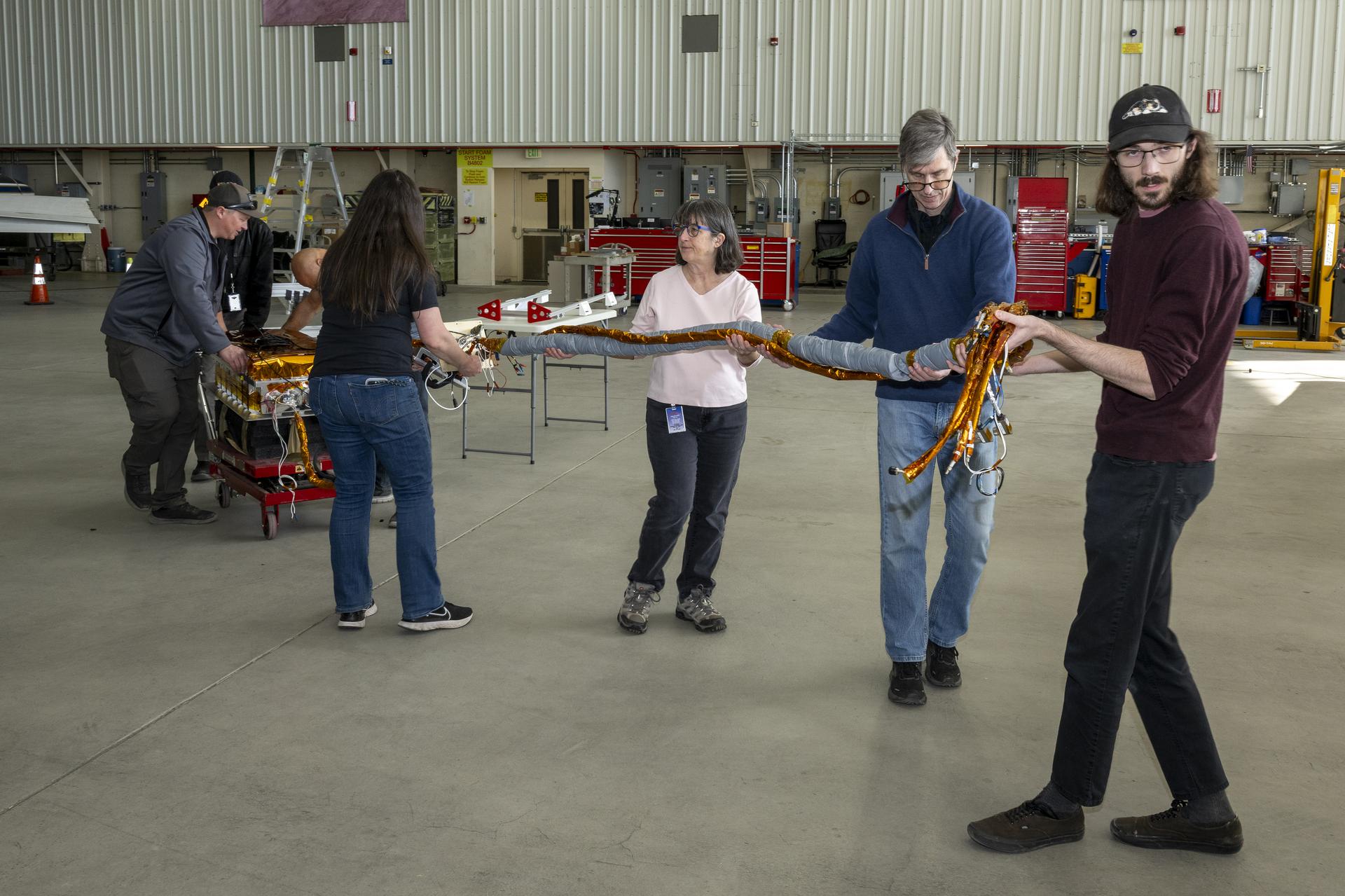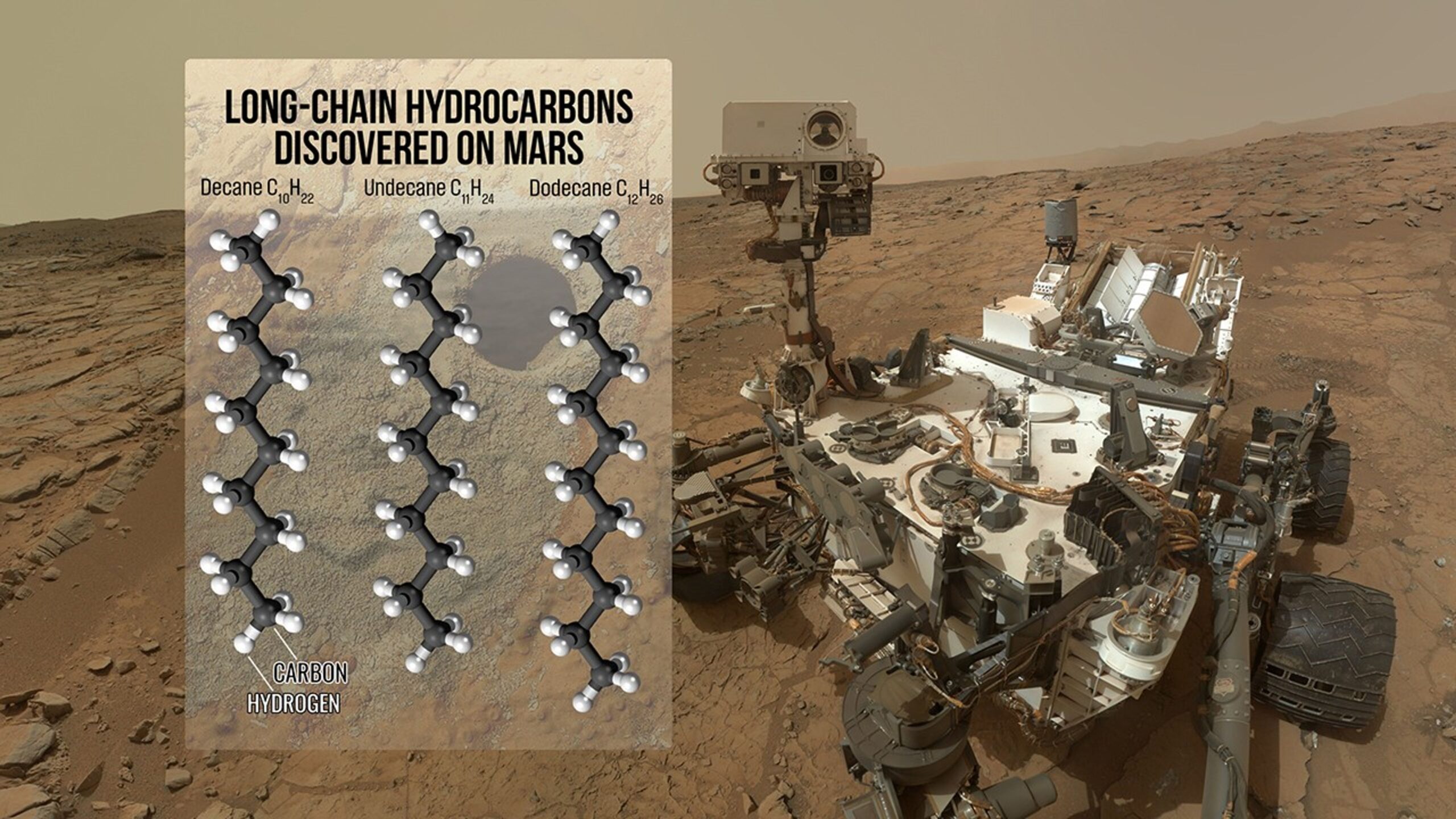6 min read Preparations for Next Moonwalk Simulations Underway (and Underwater) The SWOT satellite is helping scientists size up flood waves on waterways like the Yellowstone River, pictured here in October 2024 in Montana. SWOT measures the height of surface waters, including the ocean, and hundreds of thousands of rivers, lakes, and reservoirs in the U.S. alone. NPS In a first, researchers from NASA and Virginia Tech used satellite data to measure the height and speed of potentially hazardous flood waves traveling down U.S. rivers. The three waves they tracked…
Read MoreTag: Jet Propulsion Laboratory
NASA’s SPHEREx Space Telescope Begins Capturing Entire Sky
6 min read Preparations for Next Moonwalk Simulations Underway (and Underwater) NASA’s SPHEREx mission is observing the entire sky in 102 infrared colors, or wavelengths of light not visible to the human eye. This image shows a section of sky in one wavelength (3.29 microns), revealing a cloud of dust made of a molecule similar to soot or smoke. NASA/JPL-Caltech This image from NASA’s SPHEREx shows the same region of space in a different infrared wavelength (0.98 microns), but the dust cloud is no longer visible. The molecules that compose…
Read MoreRobots, Rovers, and Regolith: NASA Brings Exploration to FIRST Robotics 2025
What does the future of space exploration look like? At the 2025 FIRST Robotics World Championship in Houston, NASA gave student robotics teams and industry leaders a first-hand look—complete with lunar rovers, robotic arms, and real conversations about shaping the next era of discovery. Students and mentors experience NASA exhibits at the 2025 FIRST Robotics World Championship at the George R. Brown Convention Center in Houston from April 16-18. NASA/Sumer Loggins NASA engaged directly with the Artemis Generation, connecting with more than 55,000 students and 75,000 parents and mentors. Through…
Read MoreNASA Tracks Snowmelt to Improve Water Management
3 min read Preparations for Next Moonwalk Simulations Underway (and Underwater) The C-20A aircraft, based at NASA’s Armstrong Flight Research Center in Edwards, California, flies over the Sierra Nevada Mountains in California for the Dense UAVSAR Snow Time (DUST) mission on Feb. 28, 2025. The DUST mission collected airborne data about snow water to help improve water management and reservoir systems on the ground. NASA/Starr Ginn As part of a science mission tracking one of Earth’s most precious resources – water – NASA’s C-20A aircraft conducted a series of seven…
Read MoreNew York Stock Exchange Welcomes NASA’s SPHEREx Team
The New York Stock Exchange welcomed team members from NASA’s SPHEREx (Spectro-Photometer for the History of the Universe, Epoch of Reionization and Ices Explorer) mission to celebrate the launch of the agency’s newest astrophysics observatory to understand the origins and structure of the universe. Image courtesy of NYSE Group Members of NASA’s recently launched SPHEREx (Spectro-Photometer for the History of the Universe, Epoch of Reionization and Ices Explorer) mission team participated in the New York Stock Exchange’s closing bell ceremony in New York City on April 22. Michael Thelen, SPHEREx…
Read MoreNASA Tests Key Spacesuit Parts Inside This Icy Chamber
6 min read Preparations for Next Moonwalk Simulations Underway (and Underwater) An astronaut glove designed for International Space Station spacewalks is prepped for testing in a chamber called CITADEL at NASA JPL. Conducted at temperatures as frigid as those Artemis III astronauts will see on the lunar South Pole, the testing supports next-generation spacesuit development. NASA/JPL-Caltech Engineers with NASA Johnson and the NASA Engineering and Safety Center ready an astronaut glove for insertion into the main CITADEL chamber at JPL. The team tested the glove in vacuum at minus 352…
Read MoreNASA’s SPHEREx Team To Ring New York Stock Exchange Bell
NASA’s SPHEREx (Spectro-Photometer for the History of the Universe, Epoch of Reionization and Ices Explorer), a space telescope, is situated on a work stand ahead of prelaunch operations at the Astrotech Processing Facility at Vandenberg Space Force Base in California on Jan. 16, 2025. Credit: BAE Systems/Benjamin Fry Members of the team behind NASA’s newest space telescope will ring the New York Stock Exchange closing bell in New York City at 4 p.m. EDT on Tuesday, April 22. The team helped build, launch, and operates NASA’s SPHEREx (Spectro-Photometer for the…
Read MoreNASA Measures Moonlight to Improve Earth Observations
The airborne Lunar Spectral Irradiance (air-LUSI) instrument is moved across the hangar floor by robotic engineer Alexander McCafferty-Leroux ,from right to left, co-investigator Dr. John Woodward, NIST astronomer Dr. Susana Deustua, air-LUSI chief system engineer Dr. Kathleen “Kat” Scanlon, and members of the ER-2 ground crew at NASA’s Armstrong Flight Research Center in Edwards, California, in March 2025. NASA/Genaro Vavuris Flying high above the clouds and moon-gazing may sound like a scene from a timeless romance, but NASA did just that in the name of Earth science research. In March…
Read MoreUniversity High Triumphs at JPL-Hosted Ocean Sciences Bowl
3 min read Preparations for Next Moonwalk Simulations Underway (and Underwater) This team from University High School in Irvine, California, won the 2025 regional Oceans Science Bowl, hosted by NASA’s Jet Propulsion Laboratory. From left: Nethra Iyer, Joanne Chen, Matthew Feng, Avery Hexun, Angelina Yan, and coach David Knight. NASA/JPL-Caltech The annual regional event puts students’ knowledge of ocean-related science to the test in a fast-paced academic competition. A team of students from University High School in Irvine earned first place at a fast-paced regional academic competition focused on ocean…
Read MoreNASA’s Curiosity Rover Detects Largest Organic Molecules Found on Mars
Researchers analyzing pulverized rock onboard NASA’s Curiosity rover have found the largest organic compounds on the Red Planet to date. The finding, published Monday in the Proceedings of the National Academy of Sciences, suggests prebiotic chemistry may have advanced further on Mars than previously observed. Scientists probed an existing rock sample inside Curiosity’s Sample Analysis at Mars (SAM) mini-lab and found the molecules decane, undecane, and dodecane. These compounds, which are made up of 10, 11, and 12 carbons, respectively, are thought to be the fragments of fatty acids that…
Read More

